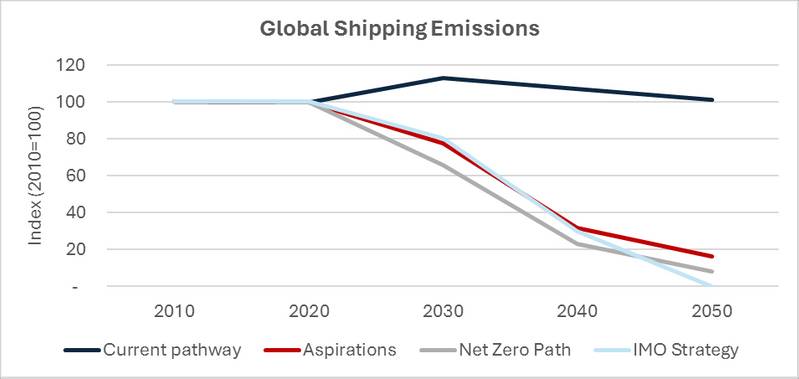In the current pathway, global shipping greenhouse gas (GHG) emissions are forecast to rise in this decade and eventually return to 2010 levels by ~2050.The chart represents the three scenarios for shipping
In the current pathway, global shipping greenhouse gas (GHG) emissions are forecast to rise in this decade and eventually return to 2010 levels by ~2050.
The chart represents the three scenarios for shipping emissions developed by the International Energy Agency (the IEA) and adds in the IMO Strategy targets for emissions reduction. The IEA’s aspirational case (i.e. what governments and companies aspire to do rather than are actually doing – that is the current pathway) closely mirrors the IMO’s 2023 updated strategic direction. The challenge is clear to see - the gap between current actions and the overall ambition to reduce emissions from shipping.

Foundation for Change
The foundation for “going green” is the 2023 IMO Strategy on Reduction of GHG Emissions from Ships which aims to reduce the carbon intensity of international shipping by at least 40% by 2030 and increase the use of zero or near-zero emission fuels to account for 5-10% of the energy used by ships by 2030. The ultimate
Content Original Link:
" target="_blank">



































































